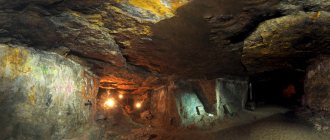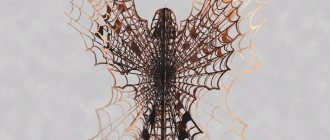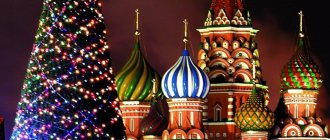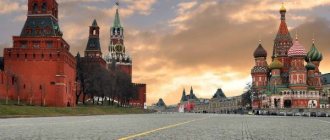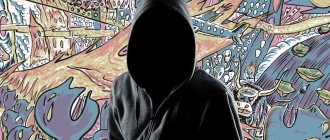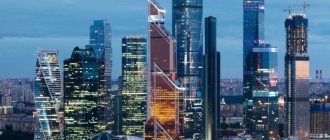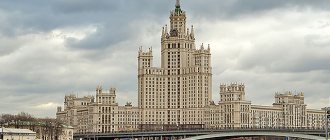The Tretyakov Gallery is the largest museum of Russian painting in the world. Its history began with the private collection of Pavel Tretyakov.
The artists dreamed that it was he who would buy their works, although Tretyakov was not always willing to pay a lot. Many were captivated by this philanthropist with his modest character and democratic views.
When Tretyakov donated his gallery to Moscow, Alexander III granted him the title of nobility. But Pavel Mikhailovich refused, considering himself unworthy of it!
Its taste was also special. He wanted to see truthfulness, sincerity and sincerity in the picture. He ignored academic and pretentious works created with the aim of impressing the public.
Therefore, many of the works he bought have stood the test of time and are recognized as masterpieces. I will tell you about a few of them.
“Morning in a Pine Forest” by Ivan Shishkin
Tretyakov Gallery in Lavrushinsky Lane
Even those who don’t like sweets know candies with bears on a candy wrapper. This painting by Shishkin became more famous than its author. But we must admit that its popularity is not a phenomenon of the modern mass market. Even the collector Pavel Tretyakov, who bought it from the artist, called it a complete reflection of Shishkin’s artistic concept. “Morning in a Pine Forest,” in his words, “speaks of a style of painting, of a creative method that is characteristic of Shishkin.” And this despite the fact that the bears were drawn not by Shishkin, but by his friend Konstantin Savitsky. But Shishkin didn’t know how to draw animals.
Buy tickets online
In addition to informational and informational purposes, the site is also of a commercial nature. Tickets to visit the exhibition can be purchased online here.
Exhibitions
For this purpose there is an active tab in the top block of the portal. Tickets purchased online will significantly save time that a person would have to spend in line at the box office if purchased on the spot. Due to the huge number of tourists wanting to get into the gallery, the line is very long indeed. An electronic ticket is much more convenient than a regular ticket, it is impossible to lose it, and entry using it occurs in a standard queue.
How to buy tickets?
Purchasing tickets is one of the standard functions of the official website of the State Tretyakov Gallery. The order is made directly on the online resource. The online price for a pass does not differ from the regular price at any ticket office.
When you go to a special section of the site, you can see all available electronic tickets for purchase. Open date tickets are valid for thirty days after purchase, while fixed date tickets can only be entered at the time indicated on the electronic ticket.
You can select the type of excursion on the page, after going directly to the purchase tab. After selecting the date and type of exhibition, the user is provided with information about the price and category of the ticket.
Excursions
Here you can see which citizens receive benefits or free entry to the museum. People from the preferential category are required to provide gallery employees with documents confirming their category. A free ticket can only be purchased together with a paid one; they must be purchased in tandem. The pass is valid only once, after which it is canceled.
Benefits of buying a ticket online
The main problem when buying tickets to visit the exhibition is the lack of time. Due to the huge number of daily visitors (reaching several thousand), the time spent in line at the cash register can be quite long. However, in the digital age, this problem is easily solved with online purchasing. In addition to the lack of a real live queue, there are several other advantages:
- Convenience. You can purchase tickets through the official website of the Tretyakov Gallery at any time. There are no queues, and support is available around the clock;
- Speed. The efficiency of the site cannot be compared with ordinary employees. The system has no failures, it works smoothly and correctly, because professional programmers worked on its creation;
- Care. On the gallery portal you have the opportunity to buy a ticket not only for yourself, but also for your loved ones, friends, or significant other. One person can order up to six passes at the same time, while people in preferential categories receive a discount or a free ticket;
- Reliability. The electronic ticket cannot be lost or forgotten somewhere. All data is stored on the resource, and it must be provided directly to museum employees at the entrance.
- Price. The cost of the product on the website does not exceed the real one stated at the checkout.
"Horsewoman" by Karl Bryullov
Tretyakov Gallery in Lavrushinsky Lane
Another picture that everyone saw on candy is “The Horsewoman” by Karl Bryullov. Behind this painting there is a big story of the artist’s love for Yulia Samoilova: they lived in Italy, she was married, he was married, but he painted her endlessly, and she supported him financially.
Karl Bryullov “Horsewoman (portrait of Countess Yu.P. Samoilova’s pupils – Giovannina and Amatsilia)”
Announcement of exhibitions
Information about exhibitions that will be held in the main building and branches of the Tretyakov Gallery in the near future (from the official website).
“The World of Art” - Alexandre Benois
Exhibition of paintings by the famous Russian artist Alexander Nikolaevich Benois.
- Where: Main building, Lavrushinsky lane. 10 (halls 49-54);
- When: 11/26/2020 – 05/16/2021
Contemporary art of India
Paintings by more than 60 contemporary Indian artists will be exhibited, including: Shilpa Gupta, Nalini Malani, J. Ravinder Reddy, Jitish Kallat, Vivan Sundaram, Dayanita Singh, Anita Dube, Mrinalini Mukherjee, Rohini Devasher, Bhupen Khakhar, Amar Kanwar and others.
- Where: New Tretyakov Gallery, Krymsky Val, 10 (in the western wing);
- When: March 2021
Exhibition of paintings by Robert Falk
Paintings by Russian artist of Jewish origin Robert Rafailovich Falk (1886-1958).
- Where: New Tretyakov Gallery, Krymsky Val, 10 (halls 39-42);
- When: 12/22/2020 – 04/11/2021
Konstantin Kuznetsov
Konstantin Kuznetsov is an artist of Russian origin who emigrated to France at the end of the 19th century. He is not yet very well known in Russia, and this exhibition is the first large-scale one of all time. The artist painted his paintings in an impressionistic manner.
- Where: Engineering building, Lavrushinsky lane, building 12 (on the 3rd floor);
- When: 12/17/2020 – 02/14/2021
"Black Square" by Kazimir Malevich
New Tretyakov Gallery
It is difficult to imagine a more famous work in Russian art. In 2015, when the painting celebrated its 100th anniversary, specialists from the Tretyakov Gallery conducted extensive research, the result of which was a sensation: under the original black square, two more images were found, taken during different periods of creativity. It has long been known that there is something underneath the black paint: green, pink, blue and yellow colors are visible in the craquelure. In 2015, using fluorescent analysis, it was possible to identify the outlines of abstract colored shapes and determine what exactly was depicted there. Then it was possible to find out that in the corner of the canvas the author’s inscription “Battle of Negroes at Night” was preserved, referring to the work of Alphonse Allais “Fight of Negroes at Night in a Dark Cave” of 1882. The inscription was made in pencil over a layer of white and was preserved rather poorly, or was deliberately erased. However, thanks to this, museum staff realized that the painting had been upside down all these years.
Photo gallery
During a missile test, the Indian military destroyed a space satellite that was in low Earth orbit, Prime Minister Narendra Modi announced in an address to the nation.1 of 5
Branches
Addresses, contacts and opening hours of museums that are branches of the Tretyakov Gallery
New Tretyakov Gallery
Address: Krymsky Val, 10
Unified information phone: ☎ +7 (495) 957-07-27
Operating mode:
| Day of the week | Opening hours |
| Monday | closed |
| Tuesday | 10:00 – 17:00 |
| Wednesday | 10:00 – 17:00 |
| Thursday | 10:00 – 20:00 |
| Friday | 10:00 – 20:00 |
| Saturday | 10:00 – 20:00 |
| Sunday | 10:00 – 17:00 |
On the map:
Engineering Corps
Address: Lavrushinsky lane, 12
Unified information phone: ☎ +7 (495) 957-07-27
Operating mode:
| Day of the week | Opening hours |
| Monday | closed |
| Tuesday | 10:00 – 18:00 |
| Wednesday | 10:00 – 18:00 |
| Thursday | 10:00 – 21:00 |
| Friday | 10:00 – 21:00 |
| Saturday | 10:00 – 21:00 |
| Sunday | 10:00 – 18:00 |
On the map:
Museum-workshop of A. Golubkina
Address: Bolshoi Levshinsky street, 12, building 1
Cash desk: ☎ +7 (495) 637-56-82
Operating mode:
| Day of the week | Opening hours |
| Monday | closed |
| Tuesday | closed |
| Wednesday | 10:00 – 16:00 |
| Thursday | 10:00 – 16:00 |
| Friday | 10:00 – 16:00 |
| Saturday | 10:00 – 16:00 |
| Sunday | 10:00 – 16:00 |
On the map:
Museum-apartment of A.M. Vasnetsova
Address: Furmanny lane, 6 (apartment 21-22)
Phones:
☎ +7 (495) 608-90-45
☎ +7 (495) 917-51-35
☎ +7 (495) 953-52-23
Operating mode:
| Day of the week | Opening hours |
| Monday | closed |
| Tuesday | closed |
| Wednesday | 10:00 – 17:00 |
| Thursday | 10:00 – 17:00 |
| Friday | 10:00 – 17:00 |
| Saturday | 10:00 – 17:00 |
| Sunday | 10:00 – 17:00 |
On the map:
House-Museum of A.M. Vasnetsova
Address: Vasnetsova lane, 13, building 1
Phone: ☎ +7 (495) 681-13-29
Operating mode:
| Day of the week | Opening hours |
| Monday | closed |
| Tuesday | closed |
| Wednesday | 10:00 – 17:00 |
| Thursday | 10:00 – 17:00 |
| Friday | 10:00 – 17:00 |
| Saturday | 10:00 – 17:00 |
| Sunday | 10:00 – 17:00 |
On the map:
Note: Other previously operating branches are now closed
“Girl with Peaches” by Valentin Serov
Tretyakov Gallery in Lavrushinsky Lane
The painting, whose fame among works of Russian art can only be compared with “Black Square,” is a portrait of Vera Mamontova, the eldest daughter of the great Russian collector and philanthropist Savva Ivanovich Mamontov. This work has become a striking example of Russian impressionism - an artificial term, but quite understandable to everyone. The fact is that impressionism is an entirely French phenomenon, but Russian artists quickly learned the techniques of foreign painters and organically used them in their homeland. This painting was painted with fractional strokes of warm and cold shades, placed next to each other on the canvas.
Valentin Serov “Girl with Peaches. Portrait of V.S. Mamontova"
Masterpieces of the Tretyakov Gallery
“The Appearance of Christ to the People” by A.A. Ivanov
A.A. Ivanov can be called “an artist of one picture.” He wrote the epic painting “The Appearance of Christ to the People” for 20 years. The painting depicts the moment of Christ's descent to the Jordan River and his meeting with John the Baptist. The models for many of the characters in the film were real people - in particular, the artist himself and his friend N.V. Gogol.
The painting was exhibited in St. Petersburg in May 1858, and a month and a half later the artist died. When in 1925 it was decided to move the painting to the Tretyakov Gallery, there was no suitable room for the huge canvas measuring 5.4 x 7.5 meters, and a separate room had to be added to the main gallery building for it.
☼ ☼ ☼
“Ivan the Terrible and his son Ivan November 16, 1581” (“Ivan the Terrible kills his son”), I. E. Repin
It is still not known for sure whether Ivan the Terrible really killed his son in a fit of rage, or whether this is a historical legend. But that doesn't matter. In the picture I.E. Repin depicts the main thing - the deep essence of evil, which grew out of the rapture of power, despotism and permissiveness. This is not only a stunning canvas, but also a clear indicator of human anger and intolerance.
The painting “Ivan the Terrible” became the first work of art in Russian history to be censored. Emperor Alexander III forbade P. Tretyakov, who bought the painting, to exhibit it or show it privately. Tretyakov himself experienced such a strong negative emotional impact from this work that he had to move the canvas to a separate room. In 1913, the painting was vandalized - it was cut up by an unbalanced Old Believer icon painter. In 2013, a group of aggressive Orthodox activists tried to organize the removal of the painting from the museum’s display.
☼ ☼ ☼
“The Apotheosis of War” by V.V. Vereshchagin
“The Apotheosis of War” is a deeply symbolic painting by the famous battle painter Vereshchagin, who had the opportunity to participate in hostilities around the world, from the Balkans to Turkestan, India and China. This is a bright and expressive protest against wars and violence.
Vereshchagin himself, with bitter irony, defined the genre of his painting as follows: “except for the crows, then this is a still life, translated from French as ‘dead nature’.” Indeed, a huge mountain of skulls, cut by sabers and pierced by bullets, in a parched stone desert under a bright blue sky is “dead nature”, the natural result of any military conflicts. On the frame of the picture there is an inscription: “Dedicated to all great conquerors - past, present and future.”
☼ ☼ ☼
“Boyaryna Morozova” V. I. Surikov
The epic historical canvas was written by V. Surikov based on “The Tale of Boyarina Morozova” - a biography of the heroine of the Old Believer movement, which was popular in his native Siberian lands. The painting “Boyaryna Morozova” still remains one of the central ones in the exhibition of the Tretyakov Gallery. Critics of the time compared it to a “Persian carpet” for its depiction of a motley, multifaceted crowd forming a kind of “pattern”. It is noteworthy that the faces of all the characters depicted, even minor ones, are strictly individual and carefully drawn out. For this painting, Surikov created more than a hundred portrait sketches!
☼ ☼ ☼
“The Lacemaker” V. A. Tropinin
Until the age of 47, V.A. Tropinin was a serf. True, his owner, Count Morkov, noticed the young man’s artistic talent and sent him to study at the St. Petersburg Academy of Arts for several years, but later Tropinin had to combine the duties of a court painter and servant for many years. He received his freedom only in 1823, and in the same year he painted the painting “The Lacemaker,” which amazed art critics with its lyricism and spontaneity. The work is permeated with the spirit of intimacy and joy of everyday life. Tropinin’s soulful female images became classics of Russian painting, and he himself was called the “Russian Rembrandt.”
☼ ☼ ☼
“Morning in a pine forest” I. Shishkin, K. Savitsky
The painting “Morning in a Pine Forest” is better known in Russia under the popular name “Three Bears”. During the Soviet era, popular chocolate candies “Bear-toed Bear” were produced, the wrapper of which featured a reproduction of this work. In fact, there are four bears in the picture, not three. The centuries-old forest covered in morning fog belongs to the brush of the unsurpassed master of landscape I. Shishkin, the funny bear cubs were painted by the artist Konstantin Savitsky. But after acquiring the painting, P. Tretyakov erased Savitsky’s signature, so its authorship was long attributed to Shishkin alone.
☼ ☼ ☼
“The Seated Demon” M. Vrubel
Vrubel’s images of demons are a unique phenomenon in Russian painting. They have nothing to do with the biblical embodiment of evil. Vrubel's demons personify the strength and greatness of the human spirit, overwhelmed by doubts, sorrow and suffering. The most expressive in this gallery of images is “Seated Demon.” He is embodied in the image of a young man, as if sandwiched between the upper and lower edges of the picture against the backdrop of a blazing sunset. The effect of anxiety and confusion is emphasized by Vrubel’s specific, unique painting style - sharp, vibrating strokes reminiscent of a mosaic. Contrary to popular belief, “The Demon” was written even before Vrubel began illustrating Lermontov’s poem of the same name.
☼ ☼ ☼
“Bogatyrs” V. Vasnetsov
“Bogatyrs” is not only the most famous painting by V. Vasnetsov, but also one of the most popular works of art in Russia. Everyone knows it, young and old, most often under the name “Three Heroes”. The heroic theme is the basis of the folk mythology of Rus'. The names of Ilya Muromets, Dobrynya Nikitich and Alyosha Popovich, valiant defenders of the Russian people, are familiar to us from childhood.
V. Vasnetsov painted the painting “Bogatyrs” for more than 20 years, bringing every detail to perfection. He considered this work his “creative duty, an obligation to his native people.” Philanthropist Savva Mamontov built a separate pavilion on the Abramtsevo estate, where Vasnetsov could work on a huge canvas. The prototype of Ilya Muromets was the blacksmith from Abramtsevo, Ivan Petrov, and Alyosha Popovich’s was Mamontov’s youngest son, Andrei. But Dobrynya Nikitich is a collective image of the artist himself, his father and grandfather.
☼ ☼ ☼
“Girl with Peaches” by V.A. Serov
“Girl with Peaches” is one of the most joyful, fresh and lyrical paintings of the late 19th century. It was painted by twenty-two-year-old V. Serov in Abramtsevo, the estate of the philanthropist Savva Mamontov, where the most famous artists of that time often gathered. The portrait depicts the owner’s daughter, 12-year-old Vera Mamontova. By the way, the peaches laid out on the table were not brought from warm regions at all; they were grown in the greenhouse of the estate by a virtuoso gardener. Later, V. Serov became one of the best portrait painters in Europe and immortalized many famous contemporaries, but “Girl with Peaches” still remains his most famous work.
☼ ☼ ☼
“Bathing the Red Horse” by K.P. Petrov-Vodkin
“The Bathing of the Red Horse” by K. Petrov-Vodkin is one of the most unusual and symbolic paintings of the early twentieth century. The original spherical perspective and color scheme of the painting were created under the influence of the traditions of Russian icon painting and Italian frescoes. When critics accused the artist that there were no red horses, he showed them ancient Russian icons in which the horses were the same color. In Russian icon painting, the color red signifies the greatness of life, and sometimes sacrifice. Contemporaries considered Petrov-Vodkin’s painting prophetic and associated the red horse with Russia, which the young, fragile rider was unable to hold.
"Above the City" by Marc Chagall
New Tretyakov Gallery
The painting “Above the City” has become one of Chagall’s most recognizable works. On it, the artist depicted himself and his wife Bella Rosenfeld flying over Vitebsk, and at the same time emphasized the metaphorical nature of sublime feelings and the brevity of existence. Over time, this surrealist-expressionist motif in his painting became more and more decorative and free, but the appearance of his small provincial hometown always remained unchanged.
Marc Chagall "Above the City"
New Tretyakov Gallery
The New Tretyakov Gallery has a more modern style. In addition to Soviet and post-Soviet art, avant-garde, realism and other movements of famous artists and sculptors, exhibits of new movements are exhibited here, which greatly attract tourists and young people.
Before this, the New Tretyakov Gallery was called the State Art Gallery, but in 1956, in honor of the museum’s centenary, it was decided to unite the galleries. To increase attendance, it was decided to rename the museum. This is what allowed us to breathe new life into it in the future.
“Demon (seated)” by Mikhail Vrubel
Tretyakov Gallery in Lavrushinsky Lane
The demon became one of the main images in the work of Mikhail Vrubel. The idea of depicting a demon or, as Vrubel put it, “something demonic,” arose very early: showing his father the first sketches in the fall of 1886, Vrubel said that the Demon is a spirit “not so much evil as suffering and sorrowful, but at the same time a powerful spirit, …stately". According to the memoirs of contemporaries, he argued that the “Demon” is generally not understood - they are confused with the devil and the devil, while the devil in Greek simply means “horned”, the devil means “slanderer”, and “demon” means “soul”, and for Vrubel, in the words of Aleksnadr Blok, “He looked like a clear evening: / Neither day nor night - neither darkness nor light.”
Mikhail Vrubel “Demon (seated)”
“Alyonushka” Viktor Vasnetsov
Tretyakov Gallery in Lavrushinsky Lane
The most “fabulous” of Russian artists, Viktor Vasnetsov, created a whole gallery of images inspired by folklore. Initially, the painting was called “Fool Alyonushka,” but the artist did not put anything offensive into this title. “Fool” meant “holy fool.” However, in the end, Vasnetsov changed the name of the work.
Viktor Vasnetsov “Alyonushka”
Schedule
| Day of the week | Opening hours |
| Monday | closed |
| Tuesday | 10:00 – 17:00 |
| Wednesday | 10:00 – 17:00 |
| Thursday | 10:00 – 20:00 |
| Friday | 10:00 – 20:00 |
| Saturday | 10:00 – 20:00 |
| Sunday | 10:00 – 17:00 |
“Unknown”, Ivan Kramskoy
Tretyakov Gallery in Lavrushinsky Lane
It’s not for nothing that Kramskoy called his model “Unknown”: even his contemporaries were worried about this image of a chic woman with sensual lips and a languid gaze. Her personality, as well as who she was for Kramskoy, still remains a mystery to the artist. Neither in his letters nor in his diaries did he leave any mention of an unknown person.
Ivan Kramskoy "Unknown"
Layout of halls and exhibitions
1st floor:
- Halls 35, 36, 37: Sculpture and painting of the 2nd half of the 19th century (I. Levitan - 37th, V. Polenov - 35th hall);
- Halls 38-48: Sculpture and painting of the late 19th and early 20th centuries (38th hall - I. Grabar, A. Ryabushkin, F. Malyavin; 39th - M. Nesterov; 40th - P. Trubetskoy, A. Golubkina; 41-42 - V. Serov; 43 - K. Korovin; 44 - Z. Serebryakova; 45 - V. Borisov-Musatov);
- Halls 49-54: Graphic painting from the 18th to the beginning of the 20th century (The exhibition is changing. Works from the gallery’s collection are exhibited 2 times a year);
- Room 55: Treasury (Art objects made of precious metals and minerals - jewelry, sewing, books, icons, etc.);
- Halls 56-62: Old Russian art (56 hall - Pre-Mongol period, 57 - Rostov-Suzdal school, 58 - Art of ancient Novgorod and Pskov, 59 - Theophan the Greek, 60 - Iconography of the Middle Ages, 62 hall - Simon Ushakov).
2nd floor:
- Halls 1-7: Sculpture and painting of the 18th century (1st hall - I. Nikitin; 2nd - I. Martos, F. Shubin, A. Losenko; 3rd - A. Antropov, 4th - F. Rokotov, 5th - D. Levitsky, 6th - F. Alekseev, 7th - V. Borovikovsky);
- Halls 8-15: Sculpture and painting of the 2nd half of the 19th century (8th - Kiprensky, Shchedrin; 9th - K. Bryullov; 10.12 - A. Ivanov; 13th V. Tropinin, 14th - A. Venetsianov; 15th - P. Fedotov);
- Halls 16-31: Sculpture and painting of the 2nd half of the 19th century (16th - K. Flavitsky, V. Pukirev; 17th - V. Perov; 18th - F. Vasiliev, A. Savrasov; 19th - I. Aivazovsky; 20th - A. Kramskoy; 21 - A. Kuindzhi; 25 - I. Shishkin; 27th - V. Vereshchagin; 28th - V. Surikov; 29-30 - I. Repin; 31 - N. Ge);
- Halls 32-34: M. Vrubel.

